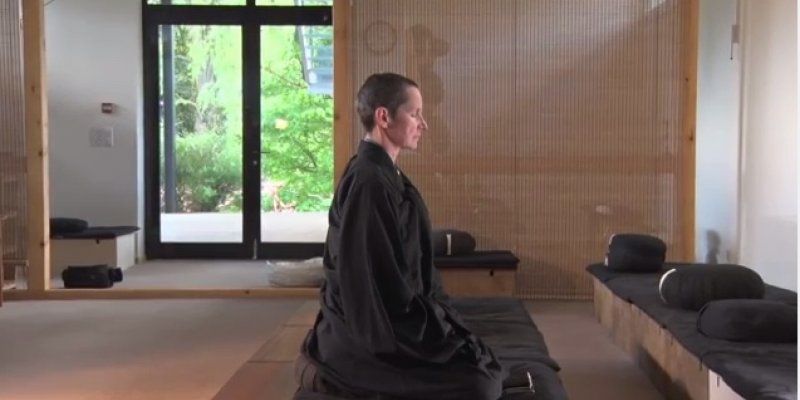Zen meditation, zazen

Why meditate?
The Western world discovered Zen Buddhism in early 20th century, through arts such as aikido, tea ceremony, flower arrangement and Japanese gardens. The depth of its philosophy and the purity of its aesthetics generated a strong interest in artistic and intellectual circles, but it did not lead to an actual practice, the source of which is zazen, zen meditation.
Nowadays, faced with the challenges of our Western societies, the practice of zazen is not only important; it is necessary.
It is through meditation that Buddha attained true freedom, 2,600 years ago. And today, it is still through zazen that we can experience a life which is meaningful, anchored in the present moment, open to the natural changes of existence.
By practising regularly, we can rediscover an inner stability, a solidity that helps us face the different stages of life with confidence. Zazen offers a precious opportunity: the experience of stillness and silence. Remaining seated when everything is bustling around us, learning to stay still when the world speeds ahead and learning to «disconnect»
are some of the benefits of zen meditation.
The secret of zen
Zazen, seated meditation
To practise zazen – zen meditation – sit in the middle of a zafu (a round and thick cushion), hold yourself straight, tilt the pelvis forward from the fifth lumbar vertebra, and stretch the spine. Cross your legs in the lotus or half-lotus position, so that your knees are rooted in the ground. Push the sky with your head, feel the earth with your knees. (depending on your health, alternative postures are possible, such as seiza (sitting on your knees) or sitting on a chair).
The left hand rests in the palm of the right hand, the thumbs are in line with each other, pressing lightly against one another, and the edges of both hands are in contact with the lower abdomen.
The chin is pulled in, the back of the head is stretched, the nose is on the same vertical line as the navel, and the shoulders are relaxed. The mouth is closed, the tip of the tongue is against the palate, and the jaw is relaxed. The eyes are half-closed, the gaze falls naturally toward the ground in front of you.
The breathing becomes gradually calm, long and deep. At the beginning, you can focus on the outbreath by gently pushing down with your belly. The inbreath will come naturally, effortlessly. After a while, you can simply observe the breathing, without modifying it, by being fully present to it. In this posture, the flow of thoughts is quieted simply by focusing on the right muscular tension and on the breathing.
The longer we practise zazen, the more we understand, within the very fibres of our body,that our thoughts are devoid of substance, that they come and go. We realize that there is an intuitive, original and universal consciousness, completely different from our usual self-awareness. If you maintain the right posture and let your breathing become deep and peaceful, your mind will also become vast and peaceful.
The functioning of the brain will naturally become clearer, but that is not a special type of consciousness; it is simply the mind returning to its normal condition. The dualistic way of thinking of our ego is cast off and original unity with all beings is realized. Intuitive consciousness, hishiryo, thinking without thinking voluntarily, occurs naturally when
we concentrate on the posture and the breathing.
VIDEO : master Deshimaru talks about zen and the virtues of practicing Zazen
A teaching from zen master Katia Kôren Robel
" Shikantaza, only sitting... Simply sitting in the posture Buddha adopted when he experienced awakening, without following any thoughts, without any object.
This is the heart of the practice in our school, pure and undecorated meditation. It is not reflective meditation, such as we conceive it in the West, but meditative absorption. We are one with zazen, we let the body and mind fall away, meaning, of course, all our daily worries, our mental ruminations, and also all concepts that we may have about Zen and zazen; and we dive totally into the moment, which is pure presence. We “cast aside the old man” and open ourselves to the reality of here and now.
For thousands of years, in India, the ascetics practiced meditation, but what characterizes zazen is that it is directly linked to the awakening of the Buddha. It is the expression, the realization of this awakening."
